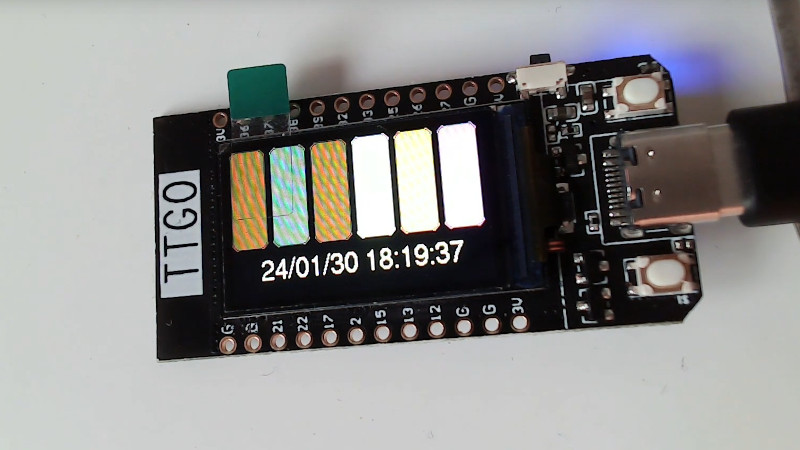Younger electronic engineers may see resistors with old-style color codes to display their values a little less than those from previous years, but if there’s a shibboleth among those who wield a soldering iron it’s probably something similar to instinctively saying “1K” when asked “Brown-black-red?”. Colors as numbers can be used outside resistors, for example in a clock, as [Det Builds Stuff] shows us with an ESP32 TFT dev board.
It’s fair to say that this is more of a software project than a hardware one, but that’s not necessarily a bad thing as he takes us though the process of creating a Network Time Protocol (NTP) capable clock with the dev board. He claims it may be the world’s first resistor clock, something we’d have to disagree with, but beside that we can see this could make a neat little desk ornament with a 3D printed case.
Oddly though, we’d expect older engineers to face the same steep learning curve as younger ones when reading it, because it’s easier to recognize visual sequences of numbers as preferred resistor values than it is to visually decode each one every time.















inevitable xkcd link:
https://xkcd.com/227/
The Paris Pneumatic Clock Network
http://www.douglas-self.com/MUSEUM/COMMS/airclock/airclock.htm
The worlds first bladieblabla… an obvious clickbait title. Followed by a “maybe” in brackets doesn’t make it less clickbait, does it?
It took me 60 seconds to find this one and to be honest, making it look like a resistor is extra points on my scale. See the link: https://hackaday.com/2021/07/15/a-perfect-clock-for-any-hackers-ohm/
Doesn’t look like a bit, looks like 1 and a half nibbles XD 😆
How does it work for color blind people?
Perhaps someone can come up with a mod to voice the hex codes of the colours?